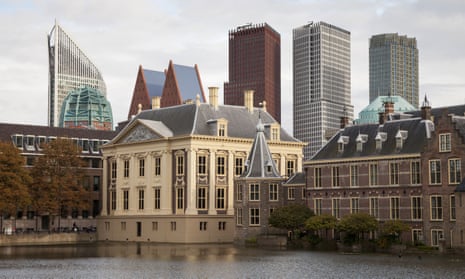A debate over the Netherlands’ colonial heritage burst into the open this week after one of the country’s leading museums came under fire for removing a bust of its founder from its lobby.
The Mauritshuis in The Hague, home to national treasures including Vermeer’s Girl With a Pearl Earring and Carel Fabritius’s The Goldfinch, said the decision was part of a reorganisation of its collection to reflect a “growing discussion in society” about the country’s slave-trading past.
A cousin of the Prince of Orange, Count Johan Maurits van Nassau-Siegen was appointed governor of the Dutch colony in Brazil in 1636. He shipped slaves across from modern-day Ghana to work on the sugarcane plantations and built the Mauritshuis as a private residence using the fortune he earned from the trade.
The prime minister, Mark Rutte, described the decision as “crazy” and warned against “judging the distant past through today’s eyes”. He later toned down his remarks after the museum’s director, Emilie Gordenker, explained in a TV interview that the bust, a composite-marble copy of an original sculpture, was no longer needed because the Mauritshuis had recently created a gallery dedicated to its founder, including an original bust.
“This is about improving the way we tell the story so that we can share all aspects, positive and negative, with our visitors,” said Gordenker. “Once we’d done that there was really no need to have this plaster replica in between the toilets and the cash desk.”
By then the debate had flared in political circles and on social media, reflecting growing unease and sensitivity about the Dutch colonial legacy. Antoinette Laan, an MP for Rutte’s conservative Liberal party (VVD), tabled questions in parliament asking if history was being “rubbed out”. “We are importing the American tendency to oversensitivity,” she said.
The debate has echoes of the campaign in the US to remove statues of Confederate soldiers from public places, but in the Netherlands few people are calling for the statues to be taken down. Some historians and politicians have called for plaques on monuments to figures from the country’s “Golden Age” to reflect all aspects of their impact on history.
Dienke Hondius, a historian at Amsterdam’s Vrije Universiteit, told RTL News that rather than being taken down, statues should be “left standing and put in context”. She cited the campaign in Barcelona to remove the statue of Christopher Columbus because of the association with imperial conquest and genocide.
“The downside is you’re no longer confronted with this chapter in the city’s history, so it’s no longer debated,” said Hondius. “You don’t want that.”
Political party Denk, which draws much of its support from minority ethnic groups, has called for streets, tunnels and bridges to be renamed and stripped of their associations with the Netherlands’ “inhuman colonial past”.
In Amsterdam, a primary school named after the former Dutch East Indies governor Jan Pieterszoon Coen last week announced plans to remove the name of the man known as the “Butcher of Banda”. “We don’t want to be associated with him,” said the headteacher, Sylvia van den Akker. “He murdered a lot of people.”
Coen’s conquest of the island of Banda in 1621 turned into a massacre in which 14,000 of the island’s 15,000 natives were killed. The council in his birthplace of Hoorn placed a new plaque under his statue five years ago acknowledging his bloody history.
Last year, the Witte de With contemporary art centre in Rotterdam said it no longer wanted to bear the name of Vice-admiral De With, whose colonial escapades included burning 90,000 clove trees on Ambon to drive up commodity prices.
Rotterdam city council agreed last October to place an explanatory plaque by a statue of the naval commander Piet Hein. Hein and De With are celebrated in Dutch history for plundering the Spanish silver fleet in 1628 in the run-up to independence from Spanish rule in 1648. Both were also pivotal in establishing Dutch colonial rule in the East and West Indies.
